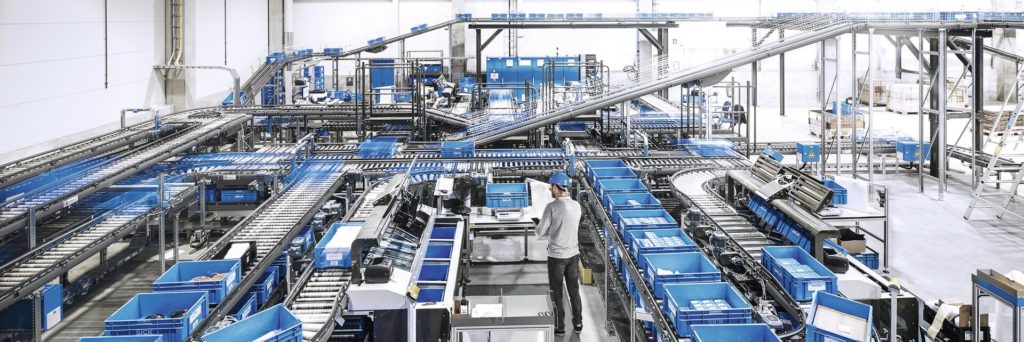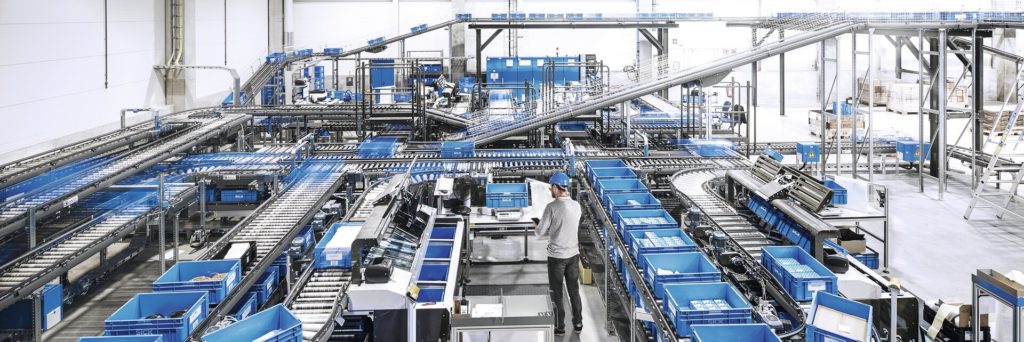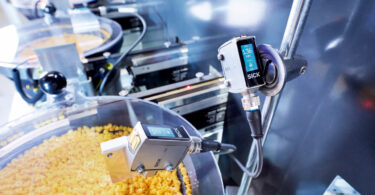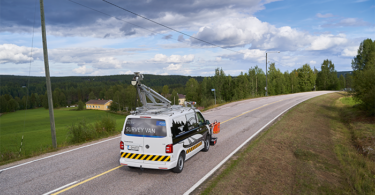E-commerce age fulfillment drives the need for smart and digitized sorting and tracking, how can vision-based barcode reading help?
For all the strategy that goes into e-commerce success, ultimately it comes down to moving the right items and packages to customers quickly and efficiently. This is why vision-based barcode reading has entered the chat. If operations can’t identify goods accurately and control the movement of automated material handling equipment with precision and speed, the result is unhappy customers and loss of market momentum. The challenge is that moving goods isn’t as straightforward as it once was. E-commerce orders are typically at the each or item level, not full cases or pallets. Packaging is changing too. Instead of boxes with uniform dimensions and edges, there is more use of polybags and shipping envelopes. According to research firm Technavio, polybags accounted for over $31 billion of roughly $82 billion global e-commerce packaging market in 2015 and constituted the fastest growing segment. The good news is that vision-based barcode reading systems can help manage packaging and pallet detection problems a worry of the past.
Operations face other immense pressures. According to MHI’s survey based 2018 Annual Industry Report, customer demands on the supply chain were seen as the biggest industry pressure, with 73% calling it extremely or very challenging. Hiring qualified workers is the second most acute challenge, with 64% rating it extremely or very challenging. The 2018 survey also found that adoption of robotics and automation, which stood at 34%, is predicted to top 53% in two years, and 73% in five years.
Think for a moment, about the impact of these mega-trends. For one, you have smaller, more frequent orders that need to move quickly through increasingly automated facilities, and second, the packaging will more often be smaller bags that can be difficult to detect and handle. The result is that companies need to evaluate whether they have the right sensing, reader and digital image management technology to provide the information needed for effective handling, tracking, and fulfillment over this stream of smaller items. Vision based barcode reading systems can help simplify your processes across the board.
“In the past, the focus with reader technology was just in getting the scan, typically on a one-dimensional bar code label,” said Tom Wik, national product manager, vision and identification with SICK, Inc. “The goal was to get a good read—to move product from here to there. While that’s still necessary, now operations are wanting more information about everything surrounding the read, like label condition and orientation, package condition, and how packages are being presented to the reader. That extra information allows you to make your processes more efficient.”
The Rise of Vision-Based Solutions
SICK is a global provider of intelligent industrial sensors, including vision-based bar code readers that capture and digitize information to help optimize package flow on conveyors, sorters, and automated storage systems. Automated materials handling systems rely on automatic ID technology to scan bar codes so that goods can be handled and routed according to the correct material flow. Other sensors such as photo eyes, dimensioning systems, and digital weigh scales also are essential to cost-efficient shipping, since carriers apply dimensional weight pricing formulas that make it advantageous to use right-sized packaging.
With vision you can capture valuable information from every tray on a loop sortation system to see if there is something on each tray so that you can keep the system highly utilized.
– Bruce Muir, national sales and marketing manager for storage and conveyor with SICK
Vision-based barcode reading systems are shaping up a key enabling technology to meet these challenges. While laser-based readers still have their place, vision-based readers are needed to read two-dimensional codes. What’s more, the high-resolution digital images that are captured “digitize” what the reader sees and the characteristics of the goods moving through the process. This repository of information about package and label characteristics can be used for everything for assessing the root cause of no read events to make automated equipment run better.
Improving Automated Sortation Systems
Vision-based barcode reading and sensing can, for example, help ensure that automation like sortation systems are being fully utilized. Given the labor crunch in warehousing, it’s crucial that operations investing in automation like loop sorters that use tilt trays or other mechanisms to handle small packages are able to maximize the throughput potential.

“There are physical limitations to the speed of loop sorters, before items start flying off the system,” Muir said. “In that situation where speed is limited, there needs to be a focus on making sure every tray is filled, to ensure you are getting the most productivity out of that asset. With vision you can capture valuable information from every tray on a loop sortation system to see if there is something on each tray so that you can keep the system highly utilized.”
Gaining Better Package Data with Vision-Based Barcode Reading
Intelligent vision-based barcode reading systems and sensors make it possible to fully understand package attributes as soon as they enter a facility and have a digital record of package condition as goods exit. This sets the stage for both proper internal routing and efficiencies while also being able to prove package condition as you transfer ownership to customers or logistics partners, points out Justin Hildman, systems manager for application solutions with SICK.
“When you receive product you’re taking ownership, so one of the key challenges is to speed up and perfect that process by using intelligent reader and sensor technology to capture codes, dimensions, and other pertinent package attributes,” Hildman said. “Digitally capturing package characteristics sets the table for many different things you can do to improve your processes.”
![]() Want to learn more about vision-based solutions for your applications? Contact SICK today at info@sick.com!
Want to learn more about vision-based solutions for your applications? Contact SICK today at info@sick.com!







